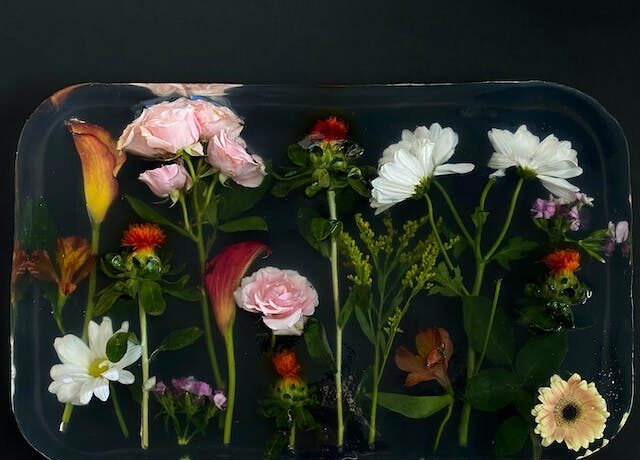Welcome to the captivating world of resin art, where creativity knows no bounds! If you’re an artist looking to express your imagination in vibrant and mesmerizing ways, then resin art is a medium that will truly ignite your passion. And when it comes to pushing the boundaries of what’s possible with resin, using resin moulds can unlock a whole new realm of artistic possibilities. In this blog post, we’ll delve into the fascinating world of resin moulds and explore the myriad benefits they bring to your resin art projects. Get ready to embark on a journey filled with inspiration, innovation, and breathtaking creations! So grab your apron and let’s dive right in!
What are Resin Moulds?
moulds for resin has become increasingly popular in recent years, captivating artists and crafters alike with its unique and mesmerizing effects. To create stunning resin pieces, artists often use resin moulds. But what exactly are resin moulds?
Resin moulds are essentially containers or shapes that hold the liquid resin until it cures and solidifies into a hardened form. These moulds come in a variety of sizes, shapes, and designs to cater to different creative visions.
There are several types of resin moulds available on the market today. Silicone moulds are flexible and allow for easy removal of the cured resin without damaging the final piece. They also come in intricate designs such as flowers, animals, or abstract patterns.
Another type is plastic or acrylic moulds which provide more rigidity and stability during the curing process. These can be used for larger projects like coasters or trays.
Wooden or metal frames can also be used as makeshift moulds to create custom-shaped pieces that suit your artistic style.
Using resin moulds offers numerous advantages for artists working with epoxy resins. They ensure consistent shape and size, resulting in professional-looking finished products every time. They make it easier to replicate designs if you want to create multiple pieces with identical shapes.
Additionally, using specific shaped molds can save time when compared to hand-sculpting complex forms from scratch. The pre-made design provides a starting point that allows artists to focus their creativity on color combinations and other decorative elements.
Different Types of Resin Moulds
Resin art offers endless possibilities for creativity, and one way to unlock your artistic potential is by using resin moulds. These moulds come in various shapes and sizes, allowing artists to experiment with different forms and designs.
One type of resin mould that is commonly used in resin art is the silicone mould. Silicone moulds are flexible and durable, making them ideal for creating intricate details in resin pieces. They can be found in a wide range of shapes, from geometric patterns to nature-inspired designs like flowers or leaves.
Another popular option is the plastic mould. Plastic moulds are more rigid than silicone ones, which gives them stability when pouring resin into them. They often come in simple shapes like circles or squares but can also have more complex designs depending on your preference.
If you’re looking for something truly unique, you might consider using handmade or custom-made wooden molds. These molds add a rustic touch to your resin art and can be customized to fit any shape or size you desire.
Using different types of resin molds adds an extra layer of creativity and versatility to your resin art projects. Whether you prefer silicone, plastic, wood, or even DIY mold-making materials, each type has its own unique advantages that can help bring your artistic vision to life. So go ahead and explore the world of resin molds – unlock your creativity today!
Advantages of Using Resin Moulds in Resin Art
There are numerous advantages to using resin moulds in resin art. One of the main benefits is that they allow artists to create intricate and detailed designs with ease. Resin moulds come in a variety of shapes and sizes, making it possible to replicate even the most complex patterns or textures.
Another advantage is that resin moulds help artists achieve consistent results every time. With a mould, you can pour your resin into the exact shape you desire, ensuring uniformity throughout your artwork. This eliminates the guesswork and allows for more precise control over the final outcome.
Resin moulds also offer versatility in terms of design possibilities. Whether you want to create jewelry, coasters, or decorative objects, there is a wide range of mould options available to suit your needs. From geometric shapes to floral motifs, there is no limit to what you can create with resin moulds.
Additionally, using resin moulds saves time and effort compared to free-form pouring techniques. Instead of having to meticulously sculpt or carve your desired shape by hand, all you need to do is pour your resin into the pre-made mold and wait for it to cure.
Furthermore, using resin moulds reduces waste as they ensure minimal material usage since only enough resin needed for each specific project will be poured into the molds.
Incorporating resin molds into your art practice opens up new creative possibilities while providing consistency in design outcomes without compromising on quality or wasting materials
Tips for Using Resin Moulds
Using resin moulds in resin art can be a fun and creative way to bring your artistic vision to life. However, it’s important to know some tips and tricks for using these moulds effectively. Here are a few suggestions to help you get the most out of your resin moulds.
Make sure to properly prepare your mould before pouring in the resin. This can include cleaning the mould with soap and water, or using a mold release agent if necessary. Ensuring that the surface is clean and free from any debris will help prevent any imperfections in your final piece.
When mixing your resin, follow the manufacturer’s instructions carefully. It’s crucial to measure out equal parts of both components and mix them thoroughly until they are fully combined. This will ensure that your resin cures properly and creates a strong bond with the mould.
Once you’ve poured the resin into the mould, take care not to overfill it. Resin has a tendency to expand as it cures, so leaving some room at the top of the mould will prevent any overflow or distortion of your design.
To remove air bubbles from your castings, use a heat gun or torch on low settings to gently pass over the surface of the resin. This will help release any trapped air bubbles and create a smoother finish.
After curing, carefully demould your creation by flexing or gently tapping on one side of the mold until it releases. Be patient during this process as rushing could lead to damage or breakage.
Experimenting with different types of molds – such as silicone molds or flexible plastic molds – can also add variety and texture to your designs! Don’t be afraid to try new shapes and styles that inspire you!
By following these tips for using resin molds in resin art projects, you’ll be well on your way towards creating stunning pieces full of color and dimension! So go ahead, unlock your creativity with these helpful techniques!
Inspiration and Ideas for Projects with Resin Moulds
Resin art is a captivating and versatile form of artistic expression that allows for endless creativity. By using resin moulds, artists can unlock even more possibilities and take their resin art to new heights.
With resin moulds, artists have the ability to create intricate shapes, designs, and textures that would be difficult to achieve by other means. Whether it’s a simple geometric pattern or a complex floral arrangement, resin moulds provide the perfect tool for bringing these visions to life.
One popular type of resin mould is the silicone mold. Silicone molds are flexible and durable, allowing for easy removal of the cured resin without damaging any details. These molds come in various sizes and shapes, making them suitable for creating everything from jewelry pendants to larger home decor pieces.
Another type of mould commonly used in resin art is the plastic mold. Plastic molds offer a wide range of design options with their rigid structure and precise detailing capabilities. From coasters to keychains, plastic molds are excellent choices for producing small decorative items with intricate patterns.
Resin casting also provides an avenue for incorporating natural elements into artwork through the use of nature-inspired silicone or plastic moulds. Imagine capturing delicate flowers or leaves within clear resin – nature itself becomes an integral part of your creation!





